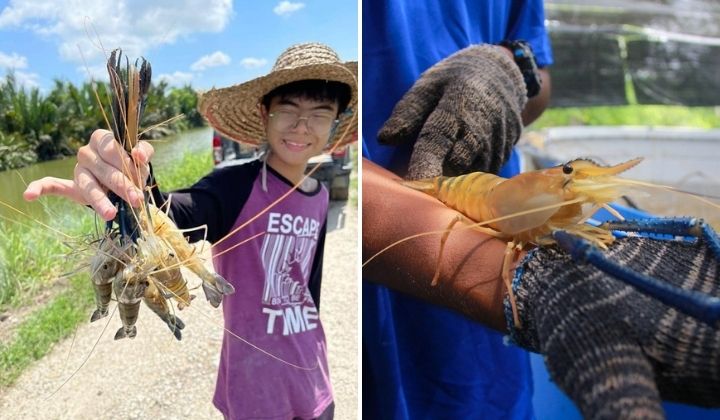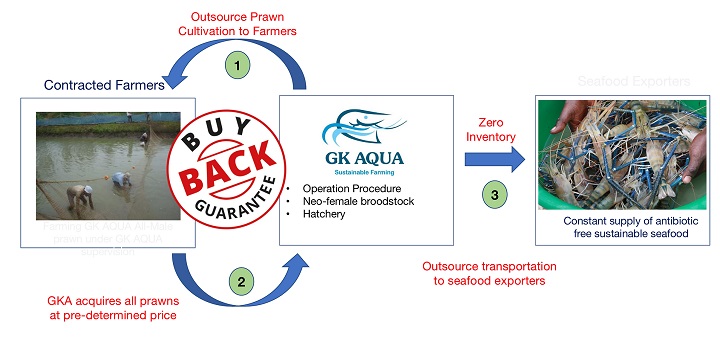This Malaysian Company Breeds Neo-Female Freshwater Prawns To Increase Yield. What Is It?
Malaysian biotechnology company GK Aqua has managed to help local farmers increase their freshwater prawns (udang galah) yields just by changing the prawn’s sex.

Subscribe to our Telegram channel for the latest stories and updates.
Large freshwater prawn (udang galah) is one of Malaysia’s well-loved local delicacies. In fact, Malaysia is the first country in the world to breed freshwater prawns successfully and has commercially farmed these prawns since the 1960s.
However, few local farmers are keen to grow these freshwater prawns because the traditional breeding method produces a low yield.
Fortunately, a Malaysian company GK Aqua used the wonders of biotechnology to manage this problem.
The problem with traditional breeding methods
In order to understand how they did it, we must first understand why the traditional breeding method is not efficient.
In a typical udang galah mixed population culture, the ratio of males to females is 30:70.
A female prawn can weigh about 58g while a sizeable male prawn can weigh 171g. The weight differences also mean the prawns are sold at different prices.
In the international market, female prawns would go for USD 5 while male prawns would cost USD 15.
On top of getting no guarantee of productivity rates, these prawns might face harm from diseases, affecting the population of prawns and thus, the yield.
How did they solve it?
GK Aqua managed to use biotechnology intervention to create an All-Male Breeding Prawns, aka neo-female prawns. What’s that?
Believe it or not, neo-female prawns are male prawns modified to be able to bear eggs and create spawn that is all male.
The genetically improved prawns have brought benefits such as:
- Prawns that are 3 times larger in size, roughly around 200g per prawn
- Disease-resistant prawns
- 200% higher market value for male prawns
- Harvesting becomes more manageable; farmers don’t need to separate female prawns, ensuring uniformity in size and actual growth rates
- Prawns are growing at a faster rate, about 4 months instead of the typical 9 months
According to GK Aqua, they have an easy-to-scale model that allows farmers with a pond to set up and adopt the new breeding method quickly. They’ll supply the fry to the farmers too.

GK Aqua also buys back the fully grown prawns from the farmers so that the farmers do not need to do their own marketing or handle logistics.
The freshwater prawns would then be sold under GK Aqua’s brand name M’Ros to consumers and businesses via seafood retailers and exporters.
Where is it grown?
So far, GK Aqua has enrolled 20 farmers with medium to big-scale farms in the freshwater prawn joint venture programme. They also included marine farmers, and they have successfully grown freshwater prawns in water with a salinity of 10 PPT.
The company has been working closely with the state government to develop Negeri Sembilan into a recognized “prawn valley” and create more entrepreneurship opportunities for Malaysians.
To cement Malaysia as the country of origin for freshwater prawns, GK Aqua has focused production in the country instead of setting up facilities in China and Singapore.
A pilot project was kickstarted in Teluk Intan to integrate paddy field growing and freshwater prawns (UGADY).
To date, GK Aqua’s freshwater prawns have been exported to countries such as Mauritius, Cairo and Dubai to cater to the market demand.
If everything goes well, Malaysia will be world-renowned as the country of origin for top-quality freshwater prawns.
Share your thoughts with us on TRP’s Facebook, Twitter, and Instagram.





